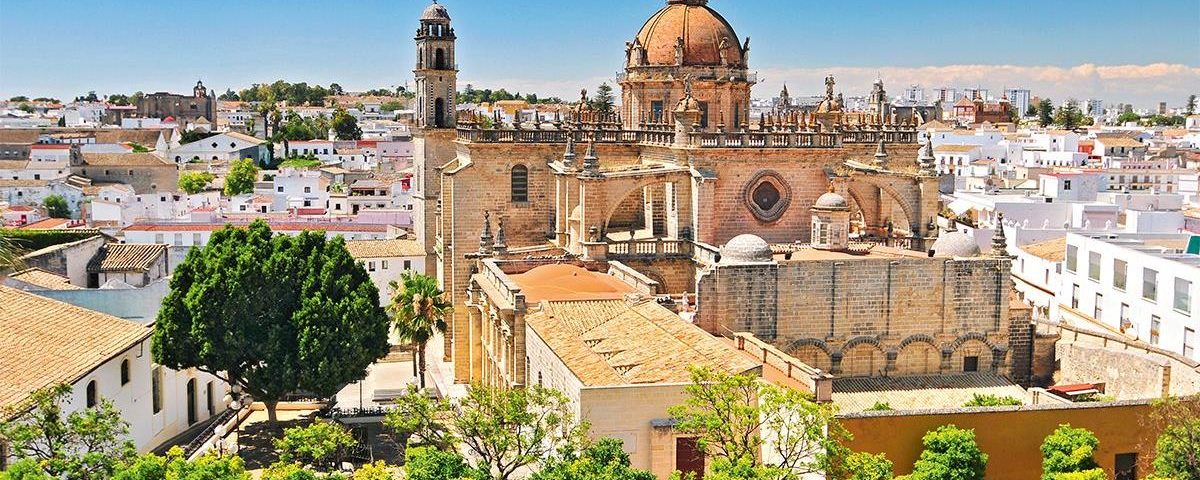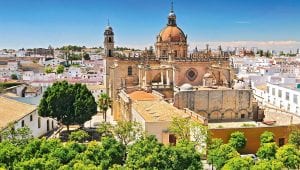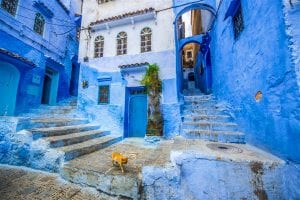- Have any questions?
- +34 951 273 575
- info@allaboutandalucia.com
How Andalucia’s ‘de la frontera’ towns got their names… and what they mean

Sierra de las Nieves could have National Park status by 2019
June 5, 2018
La Sala by the Sea kicks off summer season with White & Gold fiesta
June 13, 2018WHAT do Jérez, Arcos, Morón, Vejer, Chiclana and a number of other Andalucian towns have in common? Their full and proper names end in ‘…de la frontera’ but despite the common suffix, there’s no frontier in sight.
The Cádiz city of Jerez de la Frontera, for example, is 242 kilometres away from the nearest frontier – Portugal.
One could argue that early Spanish cartographers were not very good at their jobs, or that the Royals were never wrong.
But the fact is, the place names make perfect sense when you roll back a few centuries to the time of the Moors and the Kingdom of Granada.
The Christian forces of Aragon and Castile were slowly (oh, so slowly) taking the country back from the Moors.
These North African colonists had been in control of almost all of Spain for anything up to 750 years (depending on which bit we happen to be talking about) although, by the beginning of the 15th century the writing – whether in Arabic or in Latin – was definitely on the wall. Granada, capital of the ‘Nazarí Kingdom’, fell in 1492, the same year as Spain discovered the Americas, AKA Spain’s golden era.
Geographically poised between the Christian and Moorish territories during the years leading up to the final push in the later 15th century were a number of frontier towns which watched uneasily over a no-man’s-land (or ‘Terra Nullius’ as it was officially known – an unclaimed space between the two forces).
During its existence, this border strip had great military, political, economic, religious and cultural importance.
Beyond being a border like many others, it was for more than two centuries the European border between Christianity and Islam.
It became a place of exchange and barter, keeping alive the spirit of the Christian crusade and the Islamic jihad together with the chivalric ideal, already anachronistic in other European territories.
It also made possible illicit economic activities, such as trade in oriental products, as well as regular military incursions aimed at taking booty and hostages to maintain the slave business or simply to ransom captives.
Religious orders took sides in this regard. The border was a key element in the formation of the identity of Andalucía and in the formation of the vision of Islam throughout Spain.
While another culture might have dropped the Arab names once they conquered, the Spanish appear to have been gracious enough to keep them.
Such towns as Vélez-this and Alhama-that are quite common (the first comes from the Arab word for ‘land’, the second for ‘baths’). Indeed, anything beginning in ‘Al’ comes from the Arab prefix ‘the’: Alhambra, Almería, Alpujarra…
Al-Ándalus, as far as the Moors were concerned, means and meant anything which was under Moorish control on the peninsular – and at one point their kingdom stretched as far north as Pamplona.
Of all of the ‘frontera’ towns, mostly located in Cádiz, the largest is Jerez de la Frontera with its magnificent Alcazar, an 11th-century Moorish fortress.
The Moors called their city ‘Sherish’ and held it until 1264, although the Christian forces controlled the surrounding lands from 1248. The town eventually became a ‘frontier’ with the Granada kingdom.
Jerez is the largest non-capital city in all of Andalucía, with a population of around 210,000 (larger than Cadiz – its provincial capital – as well as Almería, Jaén and Huelva). It is known for sherry, horses, flamenco and motorcycles.
Morón de la Frontera, in the province of Seville, takes its name from a major garrison established after it had been conquered in 1240 by Fernando III, a base from which the Christian forces could harass the Moors.
Morón de la Frontera may not have a frontier but the nearby American-controlled air-base of Morón established in 1953 (and actually located in the next-door municipality of Arahal) does.
You’ll need a passport to make it past the heavily-armed gate and on to the PX sherrty store…
Another town with a de la Frontera suffix is Chiclana. It is just up the road from both Conil de la Frontera and Vejer de la Frontera.
There must have been a gleam in the eye of King Fernándo IV when he got into the swing of naming his towns in the Most Loyal Province of Cádiz…
Noted for its monuments and wineries, Chiclana has a new claim to fame as the tourist resort with the most hotel beds in the province. With a population of over 84,000, it’s only marginally smaller than its capital city, 24 km south.
Neighbouring Conil de la Frontera, again referencing its far-off ‘frontier’ with Granada, is a beautiful resort whose population quintuples in size during the summer season.
But the prize for the most charming ‘frontier’ town must go to Vejer de la Frontera, a vertiginous white village commanding views to the Atlantic.
A maze of narrow streets and white houses, it’s a deserving member of the Prettiest Towns in Spain Association.
I like the story of the Moorish prince and his Christian damsel who fled Vejer as enemy forces arrived. She tearful, he defiant. ‘I’ll build you another town as pretty as this one’, he promised her and, back in North Africa, that’s what he did, creating the beautiful turquoise-blue town of Chefchaouen.
Since The Olive Press circulates the breadth of Andalucía, we can’t omit Murcia’s frontier town of Puerto Lumbreras.
The Port of Lights may have been a trading or military ‘port of call’ but it is around 32 kilometres from the sea and its name actually refers to its frontier status. It faces Almería’s Arab-sounding Huercal Overa across a 23-kilometre strip of no-man’s-land and was a heavily-garrisoned fortress-town.
For 200 years, the sometimes uneasy border between the Christian and Moorish cultures persisted until Spain’s famously revered ‘Catholic Kings’, Fernándo of Aragon and Isabela of Castille, brought the reconquest to an end in 1492, and Spain was reborn from the ashes.










